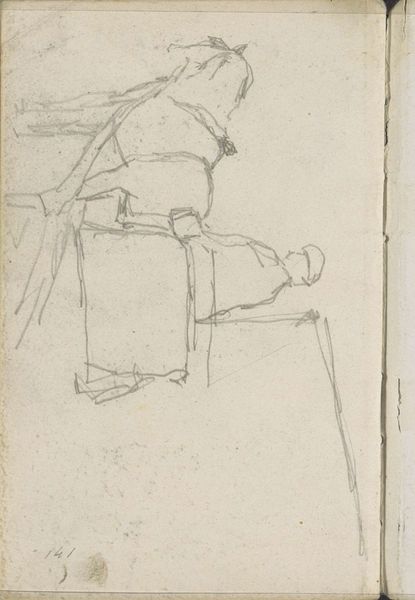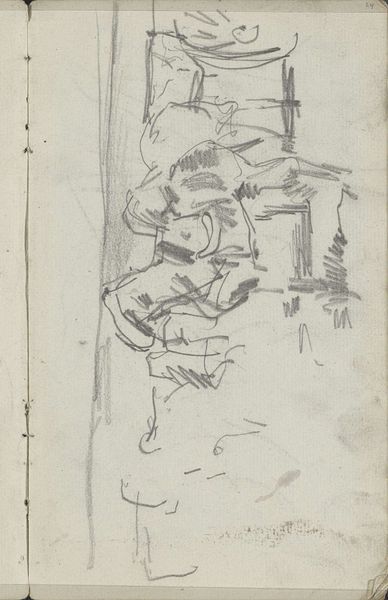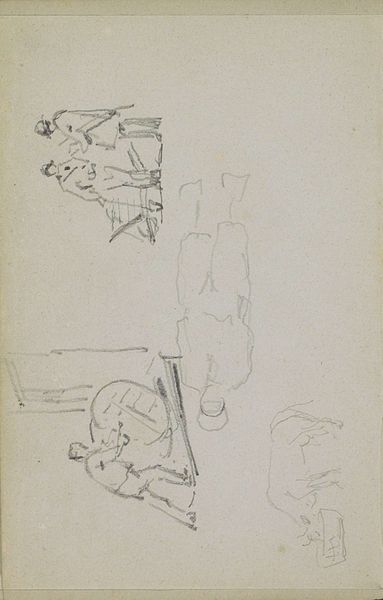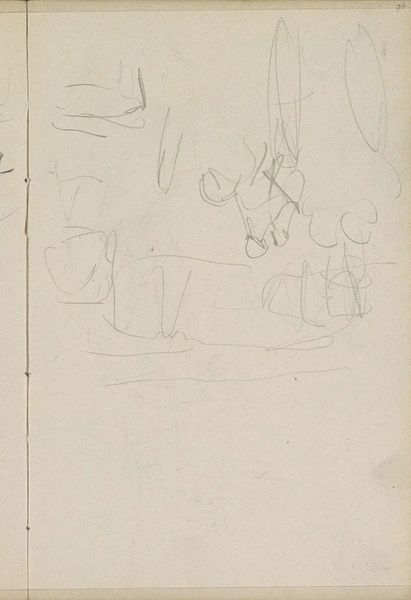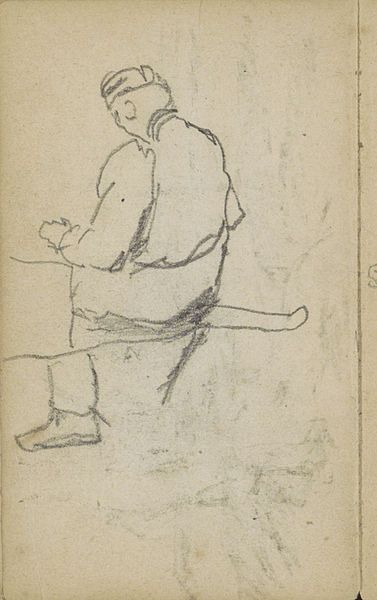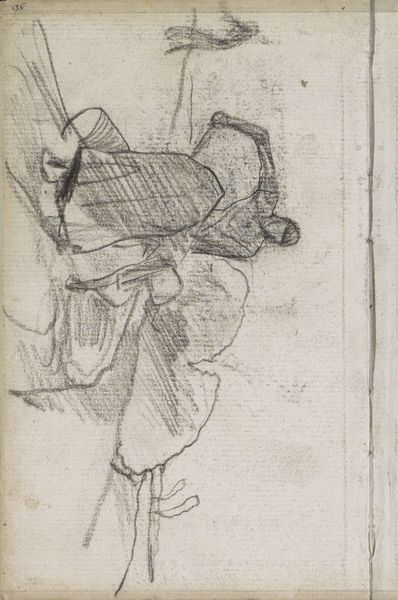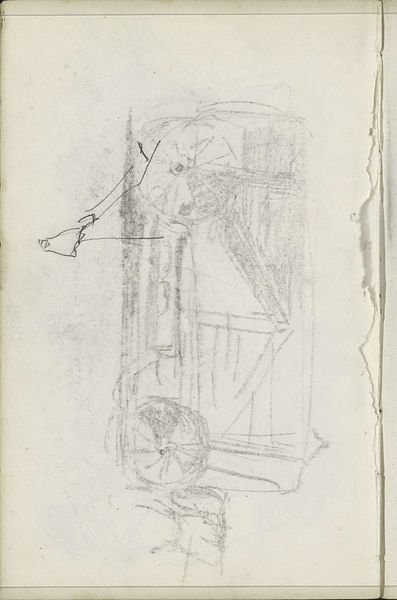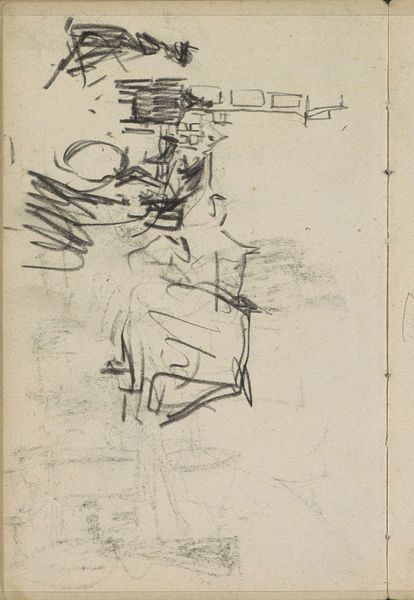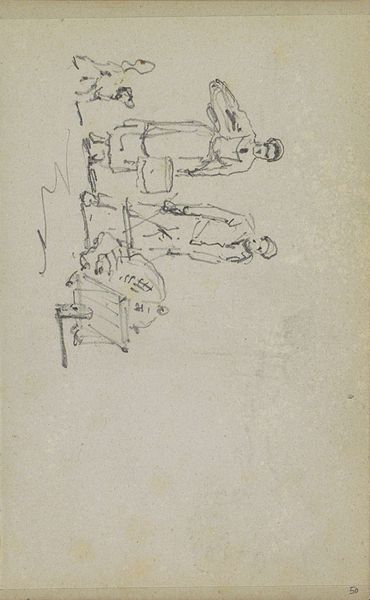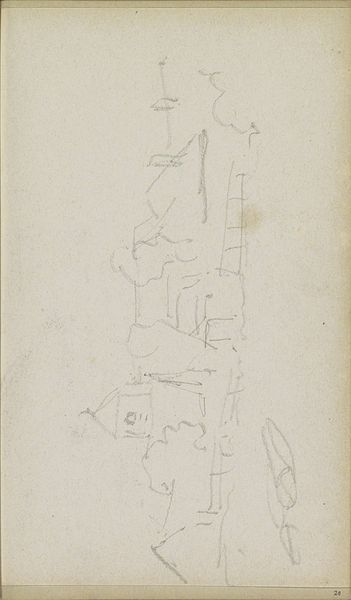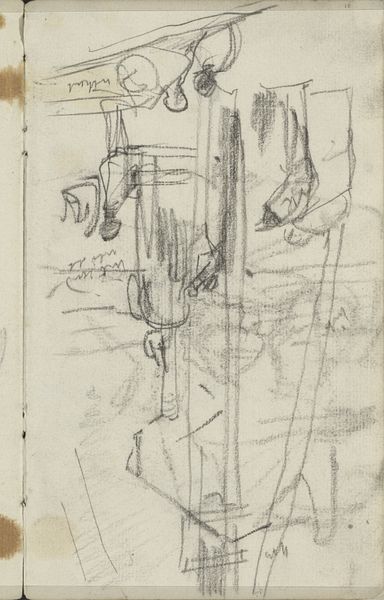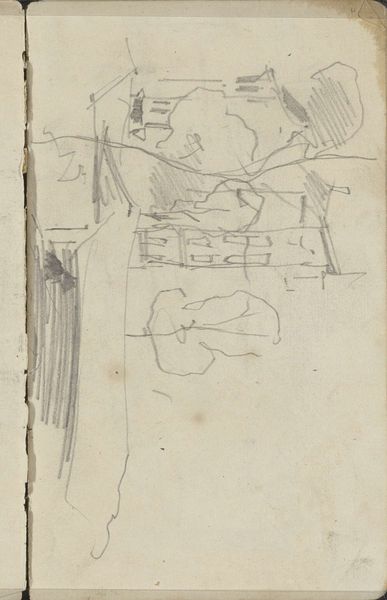
drawing, pencil
#
drawing
#
amateur sketch
#
toned paper
#
light pencil work
#
impressionism
#
pencil sketch
#
sketch book
#
incomplete sketchy
#
landscape
#
figuration
#
personal sketchbook
#
detailed observational sketch
#
pencil
#
sketchbook drawing
#
sketchbook art
#
realism
Copyright: Rijks Museum: Open Domain
Curator: It’s a remarkably candid piece. I’m drawn to the immediacy of this sketch, almost as if we’re looking over the artist's shoulder. Editor: There’s a distinct sense of transience to this piece. A horse-drawn cart in light pencil work feels… wistful. Almost as if capturing a scene fading away. Curator: Precisely! What you're responding to is Johan Hendrik Weissenbruch’s "Figure on a Horse Cart", created sometime between 1834 and 1903. It's a pencil drawing currently housed here at the Rijksmuseum. And considering the era, the choice of subject holds resonance; the working class. Weissenbruch gave us a glimpse of Dutch society, documenting the everyday lives of common people, which reflected a broader interest in social realism. Editor: That’s very true. We see these itinerant scenes repeated throughout art history. Horse-drawn carts are loaded symbols across diverse cultures – mobility, transition, a traveling salesman… or a humble farming family going to market. It taps into archetypes deeply embedded in collective memory. But, for example, consider ancient funeral processions using carts to bring the deceased to burial… here there’s just such softness to the touch… what did he want to capture? Curator: This isn’t necessarily about mourning. The unfinished sketch conveys immediacy rather than solemnity. Note the casual linework, the artist was likely trying to catch movement in public view… But its wider circulation tells us an important part of our cultural history about labour. As public art galleries increasingly began documenting ordinary rural life, pieces such as this were exhibited, thus placing new value on its form and iconography. Editor: Indeed, one does tend to project… Curator: Well, regardless of Weissenbruch's specific intent, what is clearly undeniable is its value in depicting scenes of the working people which offers today's audiences some window into 19th Century daily existence. Editor: Yes. It reminds us that visual records, even fleeting sketches, leave enduring cultural echoes. Curator: Exactly. So that small, humble sketch offers so much!
Comments
No comments
Be the first to comment and join the conversation on the ultimate creative platform.
